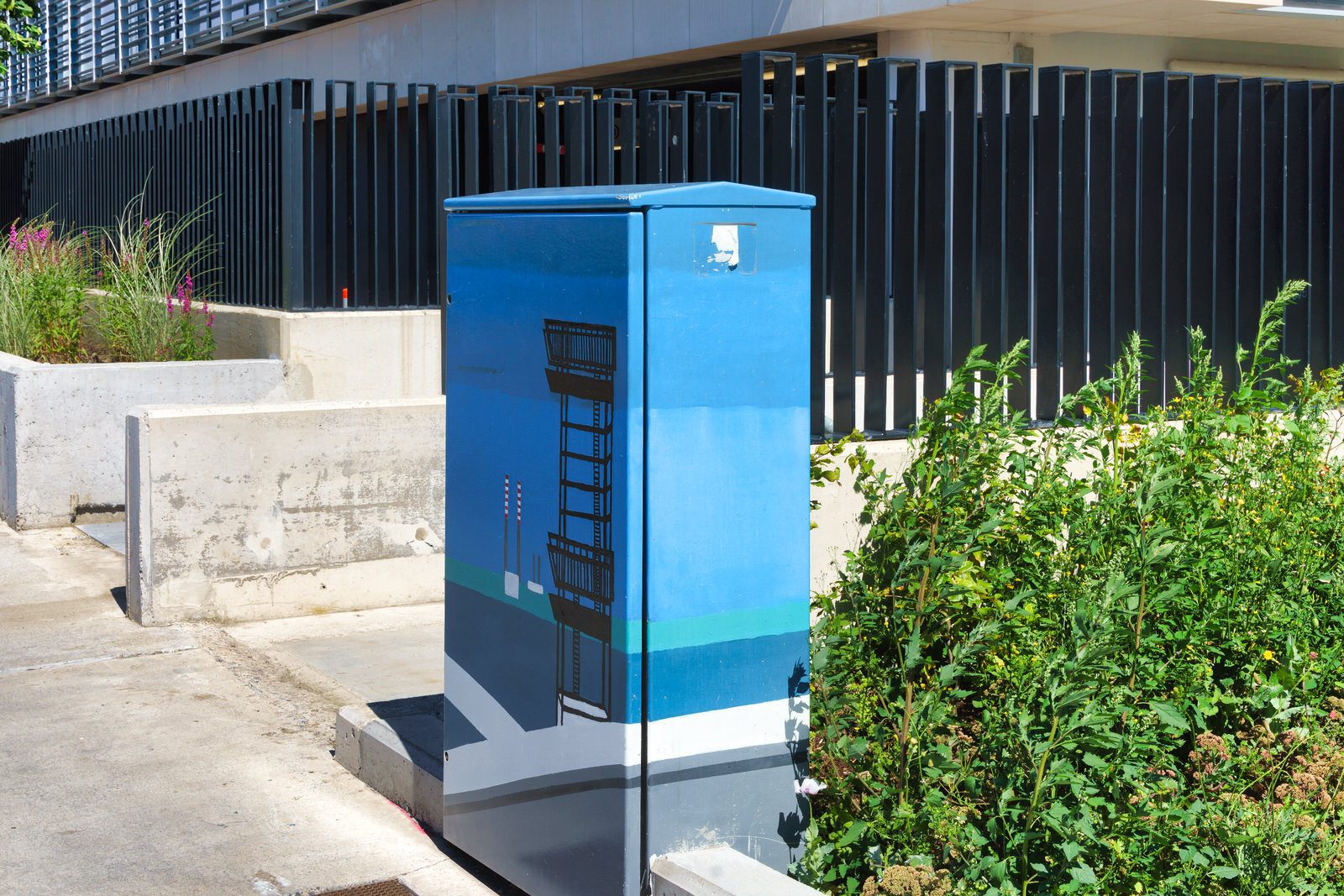A TRIBUTE TO DAVID ATTENBOROUGH
Today I had an appointment at Harolds’s Cross so I decided to walk there and visit Longwood Avenue, on my way, in order to check if this large mural had survived the legal and official attempts to have it removed.
In June 2022 it was announced that Dublin City Council was to drop its prosecution of art group Subset for three prominent street murals – including this one celebrating the life of David Attenborough.
In November 2019 I upload photographs of this mural and included the following comment: “Dublin City Council has ordered that a mural of David Attenborough on the side of a property in south Dublin should be removed. An entity or group known as Subset had recently created the Street Art tribute to David Attenborough on his 93rd birthday.”
The David Attenborough Mural is a large-scale street mural located on the gable wall of a house on South Circular Road facing onto Longwood Avenue in Dublin 8, Ireland. It was painted in 2019 by the artist collective SUBSET to mark the renowned naturalist and broadcaster’s 93rd birthday. The mural depicts Attenborough in his signature khaki jacket and hat, standing next to a group of animals, including a penguin, a lion, and an elephant. The mural is vibrantly coloured and features a stylised depiction of the natural world.
The mural was controversial from the start, as it was painted without planning permission from Dublin City Council. The council eventually ordered the mural to be removed, but this decision was met with widespread public opposition. A petition to save the mural attracted over 10,000 signatures, and the council eventually dropped its prosecution of the artists.
The David Attenborough Mural is now considered to be a popular tourist attraction in Dublin. It is a reminder of the city’s vibrant street art scene and its appreciation for the natural world.
![THIS MURAL IS TO REMAIN ON THE GABLE WALL AT LONGWOOD AVENUE [A TRIBUTE TO DAVID ATTENBOROUGH] 002](https://excellentstreetimages.com/HeadlessUrbanExpression/wp-content/uploads/2023/08/THIS-MURAL-IS-TO-REMAIN-ON-THE-GABLE-WALL-AT-LONGWOOD-AVENUE-A-TRIBUTE-TO-DAVID-ATTENBOROUGH-221024-1-150x150.jpg)
![THIS MURAL IS TO REMAIN ON THE GABLE WALL AT LONGWOOD AVENUE [A TRIBUTE TO DAVID ATTENBOROUGH]-221026-1 THIS MURAL IS TO REMAIN ON THE GABLE WALL AT LONGWOOD AVENUE [A TRIBUTE TO DAVID ATTENBOROUGH] 003](https://excellentstreetimages.com/HeadlessUrbanExpression/wp-content/uploads/2023/08/THIS-MURAL-IS-TO-REMAIN-ON-THE-GABLE-WALL-AT-LONGWOOD-AVENUE-A-TRIBUTE-TO-DAVID-ATTENBOROUGH-221026-1-1422x1067.jpg)
![THIS MURAL IS TO REMAIN ON THE GABLE WALL AT LONGWOOD AVENUE [A TRIBUTE TO DAVID ATTENBOROUGH]-221024-1 THIS MURAL IS TO REMAIN ON THE GABLE WALL AT LONGWOOD AVENUE [A TRIBUTE TO DAVID ATTENBOROUGH] 002](https://excellentstreetimages.com/HeadlessUrbanExpression/wp-content/uploads/2023/08/THIS-MURAL-IS-TO-REMAIN-ON-THE-GABLE-WALL-AT-LONGWOOD-AVENUE-A-TRIBUTE-TO-DAVID-ATTENBOROUGH-221024-1-1422x1067.jpg)
![THIS MURAL IS TO REMAIN ON THE GABLE WALL AT LONGWOOD AVENUE [A TRIBUTE TO DAVID ATTENBOROUGH]-221025-1 THIS MURAL IS TO REMAIN ON THE GABLE WALL AT LONGWOOD AVENUE [A TRIBUTE TO DAVID ATTENBOROUGH] 001](https://excellentstreetimages.com/HeadlessUrbanExpression/wp-content/uploads/2023/08/THIS-MURAL-IS-TO-REMAIN-ON-THE-GABLE-WALL-AT-LONGWOOD-AVENUE-A-TRIBUTE-TO-DAVID-ATTENBOROUGH-221025-1-1422x1067.jpg)
![HOODED YOUTH MURAL BY JOE CASLIN [LOWER MALLOW STREET LIMERICK] 003](https://excellentstreetimages.com/HeadlessUrbanExpression/wp-content/uploads/2023/07/HOODED-YOUTH-MURAL-BY-JOE-CASLIN-LOWER-MALLOW-STREET-LIMERICK-220384-150x150.jpg)
![LARGE MURAL HOODED YOUTH MURAL BY JOE CASLIN [LOWER MALLOW STREET LIMERICK] 003](https://excellentstreetimages.com/HeadlessUrbanExpression/wp-content/uploads/2023/07/HOODED-YOUTH-MURAL-BY-JOE-CASLIN-LOWER-MALLOW-STREET-LIMERICK-220384-scaled-1600x1200.jpg)
![THIS MURAL IS PROMOTING EYES GUTS THROAT BONES A BOOK BY MOIRA FOWLEY [CHANCERY STREET BESIDE FEGAN'S 1924 CAFE] 003](https://excellentstreetimages.com/HeadlessUrbanExpression/wp-content/uploads/2023/06/THIS-MURAL-IS-PROMOTING-EYES-GUTS-THROAT-BONES-A-BOOK-BY-MOIRA-FOWLEY-CHANCERY-STREET-BESIDE-FEGANS-1924-CAFE-218419-1-150x150.jpg)
![THIS MURAL IS PROMOTING EYES GUTS THROAT BONES A BOOK BY MOIRA FOWLEY [CHANCERY STREET BESIDE FEGAN'S 1924 CAFE]-218420-1 THIS MURAL IS PROMOTING EYES GUTS THROAT BONES A BOOK BY MOIRA FOWLEY [CHANCERY STREET BESIDE FEGAN'S 1924 CAFE] 001](https://excellentstreetimages.com/HeadlessUrbanExpression/wp-content/uploads/2023/06/THIS-MURAL-IS-PROMOTING-EYES-GUTS-THROAT-BONES-A-BOOK-BY-MOIRA-FOWLEY-CHANCERY-STREET-BESIDE-FEGANS-1924-CAFE-218420-1-1497x1123.jpg)
![THIS MURAL IS PROMOTING EYES GUTS THROAT BONES A BOOK BY MOIRA FOWLEY [CHANCERY STREET BESIDE FEGAN'S 1924 CAFE]-218418-1 THIS MURAL IS PROMOTING EYES GUTS THROAT BONES A BOOK BY MOIRA FOWLEY [CHANCERY STREET BESIDE FEGAN'S 1924 CAFE] 002](https://excellentstreetimages.com/HeadlessUrbanExpression/wp-content/uploads/2023/06/THIS-MURAL-IS-PROMOTING-EYES-GUTS-THROAT-BONES-A-BOOK-BY-MOIRA-FOWLEY-CHANCERY-STREET-BESIDE-FEGANS-1924-CAFE-218418-1-1358x1019.jpg)
![THIS MURAL IS PROMOTING EYES GUTS THROAT BONES A BOOK BY MOIRA FOWLEY [CHANCERY STREET BESIDE FEGAN'S 1924 CAFE]-218419-1 THIS MURAL IS PROMOTING EYES GUTS THROAT BONES A BOOK BY MOIRA FOWLEY [CHANCERY STREET BESIDE FEGAN'S 1924 CAFE] 003](https://excellentstreetimages.com/HeadlessUrbanExpression/wp-content/uploads/2023/06/THIS-MURAL-IS-PROMOTING-EYES-GUTS-THROAT-BONES-A-BOOK-BY-MOIRA-FOWLEY-CHANCERY-STREET-BESIDE-FEGANS-1924-CAFE-218419-1-1422x1067.jpg)















